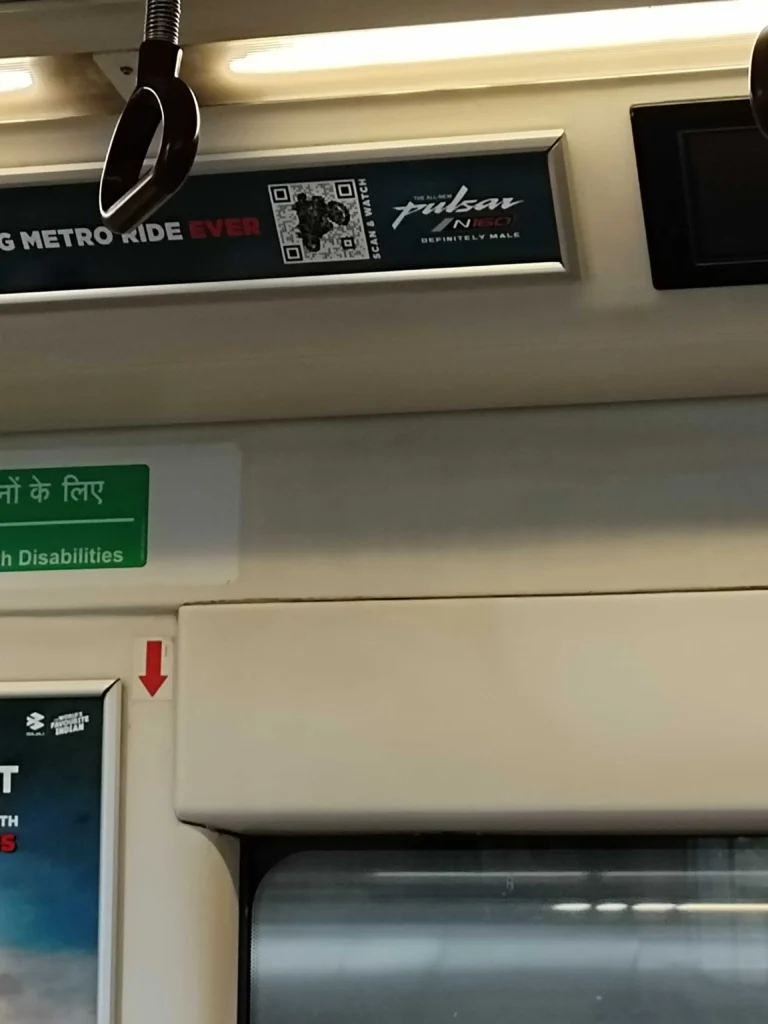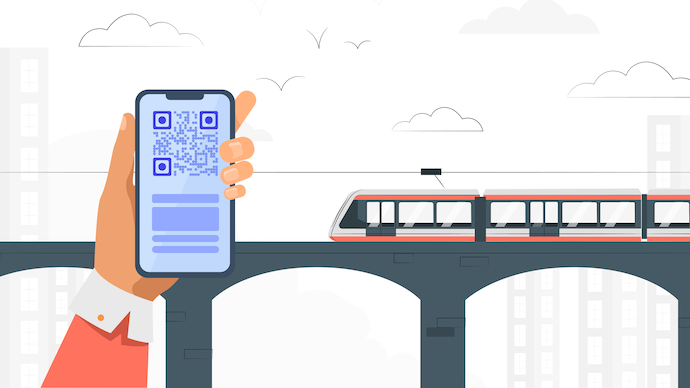You probably work with the metro rail. And it’s one of the most convenient commute alternatives for passengers these days.
You want to make the travel journey hassle-free for your customers. So you’re always on the lookout for ways to make your operations better. And you probably know that a QR Code can help you do the same.
A Quick Response (QR) Code is an easy way to store and share information. That’s why many industries such as Advertising, medicine, and aviation use QR Codes for many use cases. Some of these include:
- Authenticating drugs and medical reports
- Making marketing creatives actionable
- Ensuring easy logistics
No wonder why QR Codes are popular across the globe. They have been around since 1994 but their usage has picked up massively in the last decade.
You’ll today see them being rampantly used across the US, UK, Singapore, Hong Kong, China, and India.
In this article, we’ll discuss various ways in which QR Code technology can make metro operations smarter.
A. Three ways to deploy QR Code technology in the metro
1. Smart ticketing solutions
If you have traveled via the metro, you’d know how ticketing works. But in Delhi (India), the Delhi Metro Rail Corporation (DMRC) uses QR Codes on metro tickets. Wondering why?
This QR Code helps the passengers check in and out of the metro station. Each ticket contains the QR Code which needs to be scanned at the AFC (automatic fare collection) gate.
Once done, the passenger’s departure and destination are verified, and entry or exit is permitted.
You can deploy the same solution too. And to do it, all you’ll need is a suitable QR Code API service provider. This will help integrate real-time QR Code generation into your own information system or website.
As an example: Delhi Metro Rail Corporation (DMRC) has introduced an app called RIDLR. Passengers simply need to register themselves and buy travel tickets. Each of these tickets comes with a QR Code on it.
Generate a QR Code For Your Unique Case
START TODAY!
One can buy up to six such tickets together. At the entry gate, the ticket can be scanned for the passengers to start their journey.
2. Easy payments with little to no queues
Before you start traveling, you need to buy a metro ticket or have a metro smart card to pay for your journey.
In both these cases, a QR Code can help make payments much faster with no human error. Let us explain how.
First, if customers need to buy a ticket, you can put up QR Codes inside the station premises. As people scan it, they’ll be taken to your web portal. Here, they can enter the source and destination. Once done, they can authorize the payment.
That means, they do not need to stand in long queues anymore. And that’s just what you’d also want (especially amidst the COVID-19 pandemic).
Second, QR Codes can also help with smartcard recharge. You can simply display them at the station for the passengers to scan. Once they do it, they’ll be taken to your portal to recharge their cards online. No need to make payments in cash anymore!
For example, in Delhi (India), the Delhi Metro Rail Corporation (DMRC) is using QR Code-based payment facility at IGI Metro. To do this, they’re using an app called Bharat QR Code.
Customers just need to open the app and purchase the tickets. This is helping replace smart cards with smartphones.
3. Easy staff management
Traditionally, pen-and-paper-based methods have been used to manage and monitor staff operations.
But that’s a thing of the past. Storing all these paper-based documents is quite a task. And this process is not really scalable for staff that’s big in size. That’s why many companies now use QR Codes for their maintenance logs. Here’s how it works:
- You head on to a QR Code generation service and create QR Codes for all your employees
- Once inside the work premises, each staff member scans the QR Code
- Doing so helps record their location, timings, etc.
This way, you can track all the staff data without having heaps of papers to look after.
4. Interactive advertisements and promotions
Have you seen a lot of advertisements (such as flyers and banners) in metros & metro stations?
A lot of them have started using QR codes. For what? To help the passengers take the desired action. For example:

- Visiting the advertiser’s website to check out their products
- Downloading the required mobile application
- Listening to a podcast or song
- Watching a video or trailer online
- Giving away easily redeemable discounts and deals
In fact, marketers love adding QR Codes to their print-media promotions. That’s because of two reasons. First, it becomes easier for the target audience to take the desired action with minimal effort. And when that happens, the success rate of the campaign improves.
Second, it becomes possible for marketers to assess the impact of the campaign. This means they can see:
- Total number of scans
- Scans by time and geographical location
- Exact GPS location of each scan
- The devices and browsers used
For example, The automobile company called Bajaj ran promotions inside Delhi metro in 2022. It had posters across the metro trains that urged the passengers to watch a video showing their latest launch of the Pulsar bike online.
B. How to get a QR Code
To get a QR Code, you just need a suitable service provider depending on your needs. For example, if you want to create just a couple of QR Codes, a regular QR Code generator will work fine.
On the other hand, if your requirement is huge (say in hundreds or thousands), you’ll need a bulk generation service.
Lastly, if you want to integrate QR Code generation into your own information system, a QR Code API is what you’ll need.
That’s it. That’s all you know about how QR Code technology can be used in the metro. Still didn’t find what you were looking for or have a use case that you’d like to share? Let us know in the comments.
Generate a QR Code For Your Unique Case
START TODAY!
